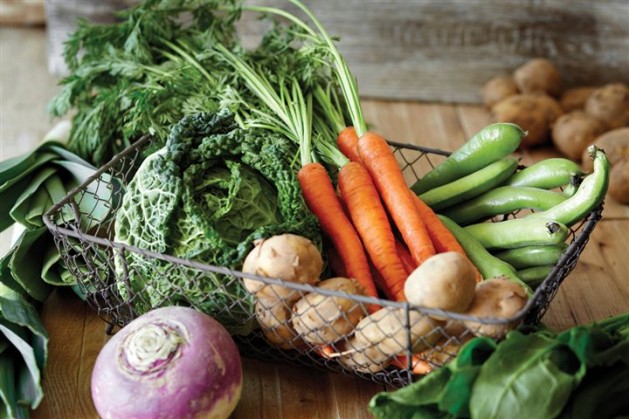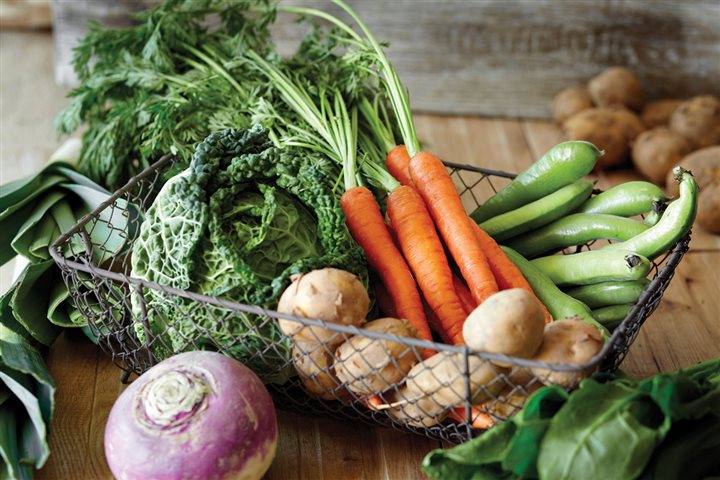
It’s the same story every year — kids return to school, temperatures drop, summer vacation becomes a fading memory and the local farmers market closes. While you may spend winter longing for the return of 80-degree days and sunny skies, you don’t have to miss out on your favorite fruits and veggies. Many are still available in local grocery stores and some smart tricks and choices can help you eat like the farmers market is still open … all winter long.
“The seasonal nature of farmers markets doesn’t have to keep you from reaping the benefits of fresh and locally grown produce,” says registered dietitian Paul Kriegler, assistant program manager for nutrition and weight loss, Life Time – The Healthy Way of Life Company. “The average store carries more than 45,000 different foods, so it’s important to know what to buy and what to avoid.”
To eat as if the farmers market is still in session, keep these tips in mind on your next visit to the grocery store:
- Plan meals and menus for the week and make your shopping list accordingly. If you stick to your list, it will help you avoid impulse purchases.
- Keep kids involved. If your children loved visiting the farmers market and learning how to eat healthy, there’s no reason you can’t continue their education in the grocery store. Take them shopping with you and give them a small budget so they can pick their own produce. Encourage them to pick fruits and vegetables from every color of the rainbow.
- It’s not just folklore – if you shop while hungry, you’re more likely to make poor choices. “When you’re hungry, anything looks good, and junk looks even more appealing,” Kriegler cautions. “Have a healthful snack like a handful of nuts or a piece of fruit before you shop.”
- Your diet should consist of mostly fruits and vegetables, so make the produce aisle the first stop when you visit the grocery store. If you fill your cart with more produce, you’ll have less room for less healthful choices.
- Shop from the outer aisles, where you’re most likely to find whole, unprocessed foods – like fresh produce. Inner aisle have more processed foods.
- Don’t be afraid to try new things. As the seasons turn, new and unexpected items may appear in produce aisles. Varieties of squash begin appearing in September and staying through March, as well as turnips, rutabagas, carrots and other cool weather favorites. An online search can help you find new recipes for virtually any type of unfamiliar produce. Experimenting with new veggies and fruits can be exciting and nutritious!
- Take advantage of store resources. Many grocery stores now include signage in the produce aisle that tells you where different items originated, how you might use them, flavor and nutrition — even recipes. If your grocery store offers free recipe cards beside a new vegetable, give both a try.
- Whenever possible, buy organic. “I commonly hear the question, is organic really necessary,” Kriegler says. “Your first goal is to increase the amount of fruits and vegetables your family eats, but once you’re doing that it’s important to choose organic produce. It will help you avoid toxins, herbicides and pesticides in your food that could affect your metabolism and cause other health problems.”
- If you must buy prepackaged and labeled foods, read the ingredient list first. If it’s full of unrecognizable or unhealthy ingredients, put it back on the shelf and look for a better alternative.
For more healthful living and nutrition information, visit LifeTimeFitness.com.



